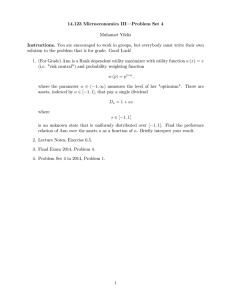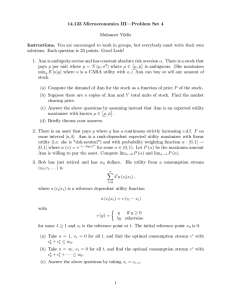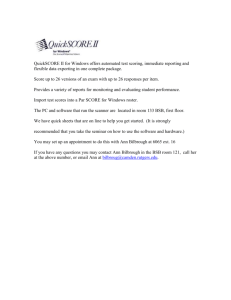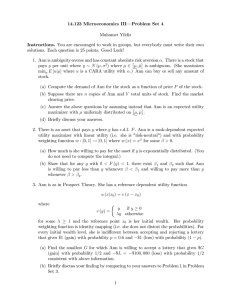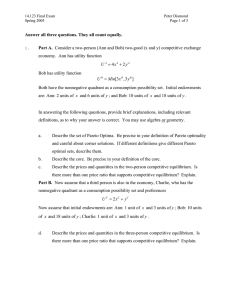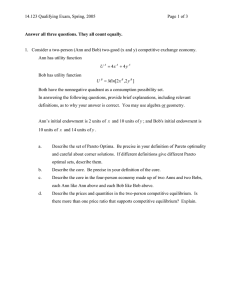Microeconomics III Final Exam 14.123 3/20/14
advertisement
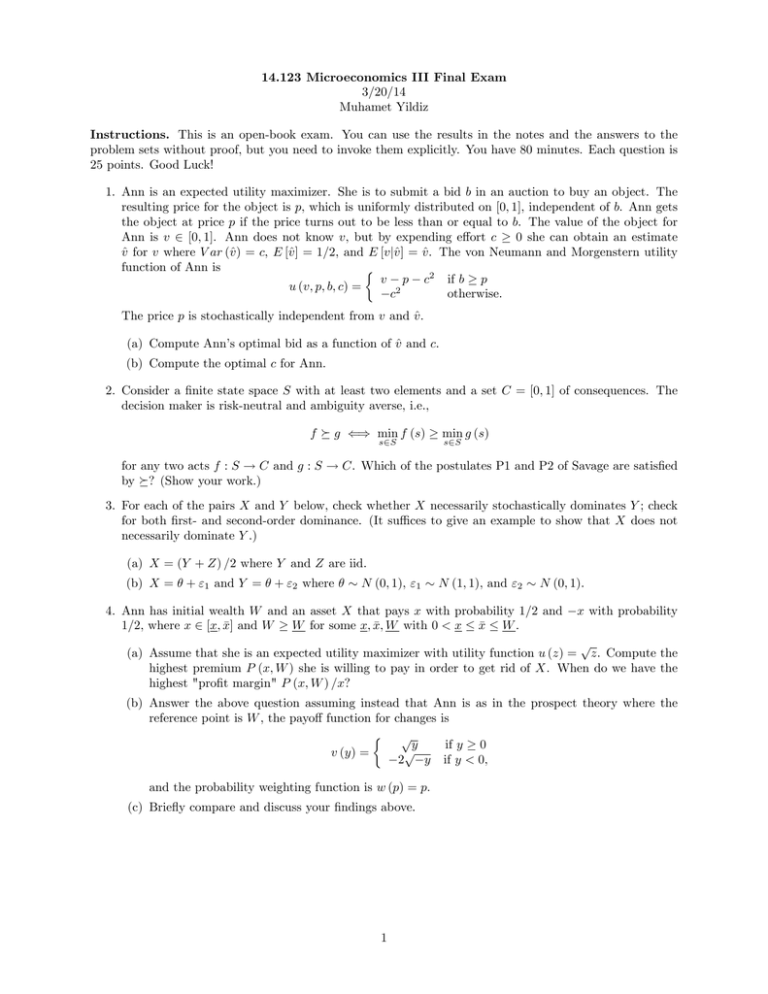
14.123 Microeconomics III Final Exam 3/20/14 Muhamet Yildiz Instructions. This is an open-book exam. You can use the results in the notes and the answers to the problem sets without proof, but you need to invoke them explicitly. You have 80 minutes. Each question is 25 points. Good Luck! 1. Ann is an expected utility maximizer. She is to submit a bid b in an auction to buy an object. The resulting price for the object is p, which is uniformly distributed on [0, 1], independent of b. Ann gets the object at price p if the price turns out to be less than or equal to b. The value of the object for Ann is v ∈ [0, 1]. Ann does not know v, but by expending effort c ≥ 0 she can obtain an estimate vı for v where V ar (ı v ) = c, E [ı v ] = 1/2, and E [v|vı] = vı. The von Neumann and Morgenstern utility function of Ann is v − p − c2 if b ≥ p u (v, p, b, c) = otherwise. −c2 The price p is stochastically independent from v and vı. (a) Compute Ann’s optimal bid as a function of vı and c. (b) Compute the optimal c for Ann. 2. Consider a finite state space S with at least two elements and a set C = [0, 1] of consequences. The decision maker is risk-neutral and ambiguity averse, i.e., f e g ⇐⇒ min f (s) ≥ min g (s) s∈S s∈S for any two acts f : S → C and g : S → C. Which of the postulates P1 and P2 of Savage are satisfied by e? (Show your work.) 3. For each of the pairs X and Y below, check whether X necessarily stochastically dominates Y ; check for both first- and second-order dominance. (It suffi ces to give an example to show that X does not necessarily dominate Y .) (a) X = (Y + Z) /2 where Y and Z are iid. (b) X = θ + ε1 and Y = θ + ε2 where θ ∼ N (0, 1), ε1 ∼ N (1, 1), and ε2 ∼ N (0, 1). 4. Ann has initial wealth W and an asset X that pays x with probability 1/2 and −x with probability 1/2, where x ∈ [x, x̄] and W ≥ W for some x, x, ¯ W with 0 < x ≤ x ¯ ≤ W. √ (a) Assume that she is an expected utility maximizer with utility function u (z) = z. Compute the highest premium P (x, W ) she is willing to pay in order to get rid of X. When do we have the highest "profit margin" P (x, W ) /x? (b) Answer the above question assuming instead that Ann is as in the prospect theory where the reference point is W , the payoff function for changes is √ √y −2 −y v (y) = and the probability weighting function is w (p) = p. (c) Briefiy compare and discuss your findings above. 1 if y ≥ 0 if y < 0, MIT OpenCourseWare http://ocw.mit.edu 14.123 Microeconomic Theory III Spring 2015 For information about citing these materials or our Terms of Use, visit: http://ocw.mit.edu/terms.
